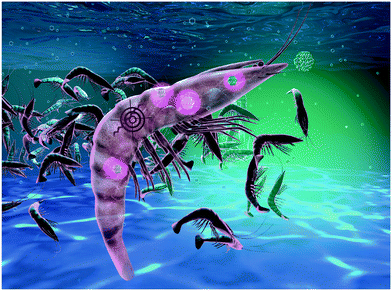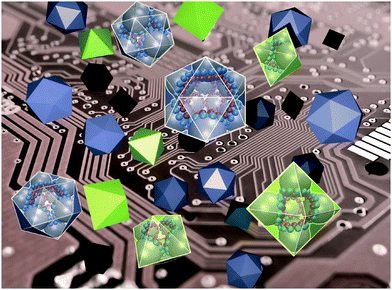MSDE emerging investigators 2018
Abstract
Juan de Pablo, Editorial Board Chair, and Neil Hammond, Executive Editor, introduce the first MSDE Emerging Investigators themed issue.
It is with enormous pleasure that we present the inaugural MSDE Emerging Investigators issue. The Royal Society of Chemistry launched MSDE less than two years ago to feature work that brings a molecular engineering approach to bear on research topics that may traditionally be viewed as disparate. This issue presents a collection of such work from the leading early-career researchers (DOI: 10.1039/C8ME90002G) who are shaping the field, as identified and invited by our Editorial and Advisory boards.
The work presented here highlights the diversity of research performed under the umbrella of molecular engineering, and which MSDE exists to support and disseminate. Experiment and theory/simulation are represented in approximately equal measure, with a variety of different theoretical approaches featured. Density field theory approaches include that of Liao,1 investigating the metal-to-insulator transition in perovskites (DOI: 10.1039/C8ME00002F), and that of Konstantinov,2 which addresses the rational design of low density polyethylene systems (DOI: 10.1039/C7ME00087A). Qin3 adopts an analytic approach to investigate the polarisation energy of dielectric spheres in close contact (DOI: 10.1039/C7ME00105C), and machine learning tools are developed and utilised by Ferguson4 in his investigation of patchy colloid design (DOI: 10.1039/C7ME00077D, Fig. 2), and by Pfaendtner5 in his modelling of viscosity in ionic liquids (DOI: 10.1039/C7ME00094D).
Various classes of materials are also included. Biomolecular systems feature in Speck's6 work on peptide folding (DOI: 10.1039/C7ME00080D), as well as Alper's7 review (DOI: 10.1039/C7ME00083A) of rational approaches towards design of DNA, RNA and protein elements. Amongst several articles featuring polymeric components is Becer’s8 work on glycopolymer-coated gold nanoparticles (DOI: 10.1039/C7ME00086C), Herdes'9 study (DOI: 10.1039/C7ME00084G) of molecularly imprinted polymers as potential sensors for explosives, and the article from Sing10 investigating the physical origins of complex coacervation (DOI: 10.1039/C7ME00108H).
We are also heartened to see work with potential benefits across a range of application areas. Therapeutic and diagnostic systems are investigated by Thurber11 in his analysis of antibody–drug conjugate transport in tumours (DOI: 10.1039/C7ME00093F), by Hackel12 in his optimization of molecular probes for PET scanning (DOI: 10.1039/C7ME00095B), and by Schroeder13 in his design of nanoparticles to treat a common viral disease in shrimp via RNA interference (DOI: 10.1039/C7ME00092H, Fig. 1). Health is also the focus of the work from Chemmangattuvalappil,14 which applies computer-aided molecular design to provide a methodology for improved safety assessment of molecular hazards (DOI: 10.1039/C7ME00073A).
 | ||
| Fig. 1 Front cover art depicting Avi Schroeder's anti-viral RNAi nanoparticles protecting shrimp against white spot disease. | ||
 | ||
| Fig. 2 Front cover art depicting assembly of patchy colloids by landscape engineering reportedby Andrew Ferguson. | ||
The tuning of side chains to deliver benefits for solar cell technology is addressed by two studies included here. The contribution by Cui15 (DOI: 10.1039/C7ME00075H) focuses on small organic molecules, and that of Liang16 (DOI: 10.1039/C7ME00088J) investigates all-polymer systems. Potential benefits for solar cell technology are also addressed by Lee17 (DOI: 10.1039/C7ME00099E), who considers the tuning of polymer blend nanoparticle films to deliver desirable transport properties.
In the realm of separation and capture technologies we feature work from Rimer18 on the control of zeolite synthesis (DOI: 10.1039/C7ME00097A), a study from Salvalaglio19 on CO2 packing in nanopore confinement (DOI: 10.1039/C7ME00103G), and an article from Slater20 (DOI: 10.1039/C7ME00090A) in which she demonstrates a new cost-effective design route for a porous organic cage of considerably greater industrial feasibility.
The article from Riggleman21 relies on self-consistent field theory for inverse design of self-assembled 2D nanoparticle lattices (DOI: 10.1039/C7ME00081B) with potential applications in optical technologies. Such technologies are also the focus in the work of Yuasa22 (DOI: 10.1039/C7ME00082K) on circularly polarised luminescence in a chiral lanthanide ensemble, and by Nair23 (DOI: 10.1039/C7ME00089H), who addresses the reversible switching of solid-state luminescence in divinylbenzene derivatives. Furthermore, Park24 explores unusual solvent-dependent relaxation dynamics of a porphyrin dimer to inspire new optical, electronic and spintronic materials (DOI: 10.1039/C8ME00001H).
We are indebted to all the authors for their contributions, which have originated from academic departments and commercial organisations across the globe. They serve to highlight the creativity and relevance of a new generation of molecular engineers whose efforts transcend traditional disciplinary boundaries between engineering, chemistry, physics, and biology, and whose aim is to address important global challenges through innovative materials designs. We hope you will enjoy reading these articles as much as we have.
References
- https://sites.google.com/view/lpl/people .
- https://www.researchgate.net/profile/Ivan_Konstantinov .
- http://web.stanford.edu/~jianq/ .
- http://ferguson.matse.illinois.edu/ .
- http://prg.washington.edu/ .
- https://www.noneq.physik.uni-mainz.de/ .
- https://utw10252.utweb.utexas.edu/ .
- http://www.becergroup.sems.qmul.ac.uk/becer.html .
- http://www.bath.ac.uk/chem-eng/people/herdes-moreno/ .
- https://sing.scs.illinois.edu/ .
- http://cheresearch.engin.umich.edu/thurber/ .
- https://research.cems.umn.edu/hackel/index.html .
- https://www.schroederlab.com/ .
- https://www.nottingham.edu.my/Engineering/People/nishanth.c .
- https://chemistry.suda.edu.cn/english/56/8c/c2020a22156/page.htm .
- http://www.sustc.edu.cn/en/faculty_finder/f/Liang_Yongye .
- http://www.seas.upenn.edu/~leegroup/people.html .
- http://rimergroup.com/ .
- https://www.ucl.ac.uk/molecular-modelling .
- https://www.agslatergroup.com/ .
- http://rrgroup.seas.upenn.edu/ .
- http://www.rs.tus.ac.jp/yuasaj/01.html .
- http://niist.saturn.co.in/english/scientists/c-vijayakumar/profile.html .
- https://park-group.wixsite.com/park-group/jaehong-park .
| This journal is © The Royal Society of Chemistry 2018 |


